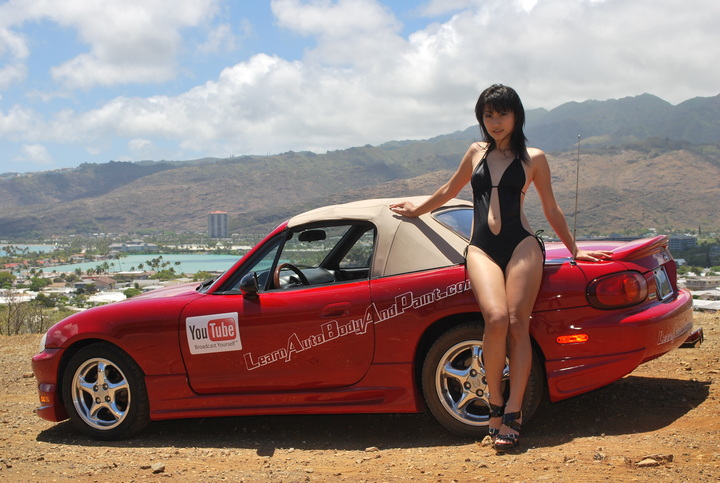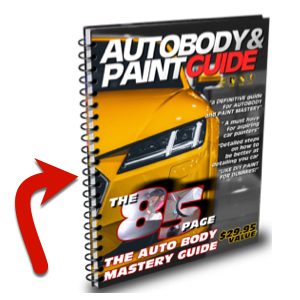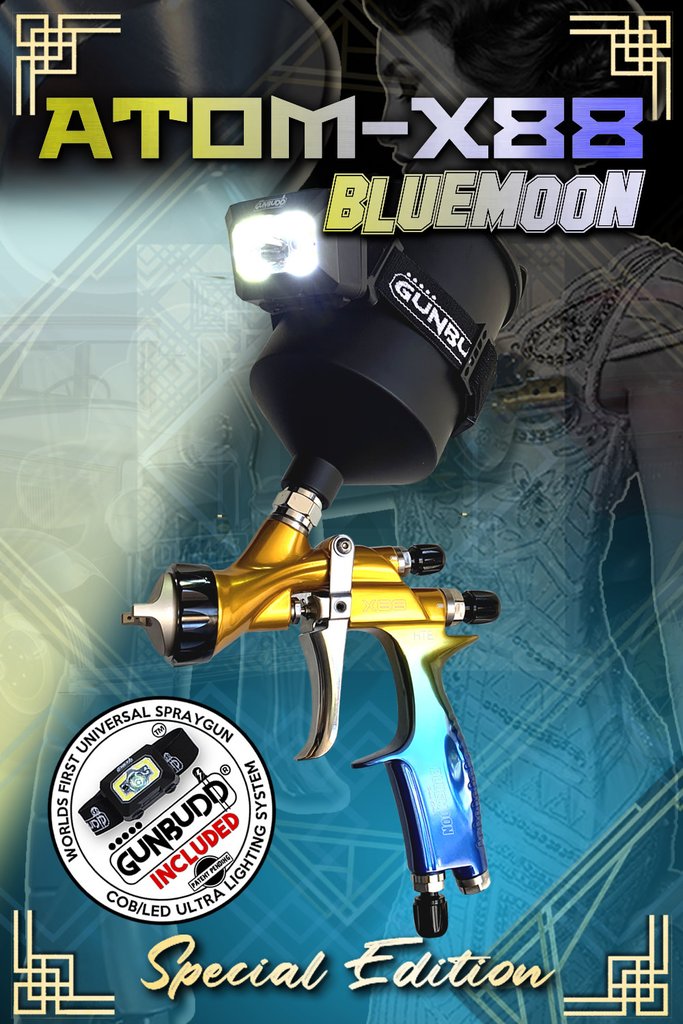Did you enjoy our Live Autobody Q&A video? Giving some ideas on “Prepping your BUMPER for painting”. I hope that helps! Check out LearnAutoBodyAndPaint VIP to get free Auto Body training that will help turn you into an auto body and paint PRO, from home! Don’t forget to Like and Subscribe on Paradice Garage YT Channel. Secure your slot now and be part of the #BossPainter community!
AUTOBODY Q&A🚘
QUESTION: I got a 4 door sedan that I’m planning to spray high build primer all around the car. How many quarts would I go through each coat?
You’ll probably go through a quart to a quart and a half. It depends if you’re going heavy on certain areas or not. If you’re just going even coats, it shouldn’t take more than 3 quarts for all your primer work.
Going around so about a quart and a half per timer and again it depends on how much primer you’re doing. I don’t know if you are priming the whole thing or 80% of it because you don’t need to prime the whole car, mostly your bodywork areas. It depends on how the rest of the car looks like.
if it’s just sanded prepped up, cleric sanded, clear coat sanded, single-stage, you could just paint right over that actually without having to prime everything. Alright, so just to give you a ballpark idea, three quarts are going to be plenty, should be more than enough to go around to two and a half times, and then maybe an extra coat on, an extra layer on areas that you did bodywork on.
QUESTION: I sanded the entire truck to metal. I’m using all Eastwood products. I have epoxy, 2k urethane, a base coat, and clear. Can I spray it all in one day?
It’s a lot of work. I don’t know if you’re gonna be able to get it done. I don’t think you have enough time to do it in one day because just doing the primer work, letting that sit and prepping it, and getting it ready is going to take a day.
You’re not going to do it all in the day, you don’t have enough. There are not enough hours in a day to do it all in a day. Because the right way to do it is to spray your epoxy filler, your epoxy primer. You might want to put filler primer on top of that, to get it really flat. Take out the nicks and chips and get it really nice and adhered really well to your metal.
And on the other hand, you might not have to. If you spray your epoxy on thick enough, you could use that as a foundation to put your paint on top of your epoxy primer. It’s really up to you if it works with your budget as well.
If you have an extra if you have extra money and time to put into it, then you put after your epoxy. you don’t have to sand it. You wait a few hours, you can even wait up to a day and then spray 2 -3 coats of 2k filler primer on it and block it out, guide coat it. Do whatever you got to do to get it flat and prepped up for your base coat and clear coat.
So I think it’s impossible to do it in one day. Especially if you’re doing from the primer stage. There’s not enough time. Okay? Do your primer, get it prepped up, get it ready and then do your paint. Hopefully, that helps.
QUESTION: How long after epoxy primer then urethane 2k. Do I have to wait to start my base coat?
So epoxy primer, basically you’re safe. You got like a 24-hour window to spray or 2k on top of it without sanding.
If you’re waiting more than two (2) days, three (3) days, I would give it a light scuff with maybe 150 grit, 220 grit, just to even up to a 240 grit. Scuff it quickly and then put your 2k filler primer on top of it. Then I would let that wait a day.
You could wait that 2k filler primer will set up and dry in about four hours hard, the normal 2k filler primer and then you could actually start wet sanding it or dry sanding it. But I like to wait if you can if you’re not in a super rush and you can wait a day. Especially if you’re doing a complete car. Wait a day, let it cure up, and then sand it, prep it and then put your base coat clear coat.
But if you’re doing a small repair job, a Fender that you’re repainting, it’s a job that you can get done in a day. You could absolutely spray it, wait two hours, an hour and a half, sand it and paint it. You know you can do it. But it just depends on the size of your project and you’re talking about a complete project. So a complete paint job.
I would say, give yourself a day, let it set up good, and then the next day, sand it down prepping and painting. Because the sanding down and prepping could be half your day. And then painting it’s just a few hours, depending on how custom you’re going to get. If you’re gonna get really custom your paint job can last a day, you know, depending on how much graphics or pinstripe you’re doing or you know multi-tone masking is what takes time.
QUESTION: When prepping for primer. Do you have any ideas on how to tape off holes that are left from my lights on the roof without having to remove the interior from the inside?
Well, you could just throw a little piece of tape over it on the top side, you know as best as you can, and just prime it. And then when you take those tapes off, you can sand and feather in the hard edge.
The other way is to basically get a piece of tape, push it in and then pull up with like a chopstick or something. Sometimes you’ll get a good bond that holds for that. It’s a little tricky if you’re dealing with that but if you can’t get it from the underside,
I usually just tape above it and but when I’m doing the final paint job, I’ll leave it open so you just get the paint over those areas, because most likely you’re going to have something go on top of it. So you’re not gonna see a little imperfection of tape or whatever.
QUESTION: When reshooting a previously painted plastic bumper, can you use the old paint as a primer after sanding or should you use a primer first before the base and clear?
So you absolutely you could put paint over new paint. Okay, as long as your clear coat or your single-stage enamel is in good condition, you can sand that and you could actually paint directly over it. It’s actually the clear coat, a single-stage paint job is a good foundation to put more paint on top of, you could do that. Primer is not necessary 100% of the time.
If you’re doing bodywork, yeah, you’re going to need primer over your bodywork, over your metal, over your body filler, your fiberglass. But you could use paint, you know, like if I were to paint my BMW outside over here or my new Tesla, I would just scuff it up, I would just scuff the clear coat and then put my new color base on top of it.
QUESTION: Change the color of a plastic Audi bumper. What grit do I use before spraying bulldog adhesive?
So you basically just need to scuff it up. I would scuff it with 600 grit, 400 to 600 and all old pieces of 400 will work fine.
QUESTION: With that Audi bumper that I’m spraying bulldog, Would 400-600grit be too fine for primer?
Yes, absolutely. If that bumper is already painted. Is that a brand new bumper or a raw plastic bumper because if the bumper is already painted, you could just scuff it with four to 600 grit and paint right on top of it. You don’t even need to prime it.
QUESTION: The paint code for my truck and glove box, do I give the size of pearl in the code?
Yes, the paint code is the paint code. So you give them the paint code, take a picture of it. If you’re unaware of what the code is because you’re gonna have a couple of codes, interior code if it’s a two-tone paint job. Some of the new cars got two-tone paint jobs. They give you two color codes, so take a picture of it, give it to them, and they’ll know what code is the correct code.
==============
So that’s pretty much it guys. I want to say thank you for tuning in. Hope you guys learned something today. Just stay tuned for that video it’s going to be popping out. I actually have to finish rendering it in a little. That’s what I’m going to do after I get off the call with you guys. We will get started on these next projects.
I talk to you soon guys. Have a great day. Cheers. Aloha from Paradice Garage.
🔎For more helpful links🌐
Should I Take Off Bumper Covers When Painting?: Auto Body Q&A
Plastic Rubber Bumper Repair Tips – Replace or Repair
How To Sand Out Cracks and Respray Plastic Bumper Cover
DO THIS! Spraying CAKED UP 2K Primer on RAW Plastic and Epoxy Primer


